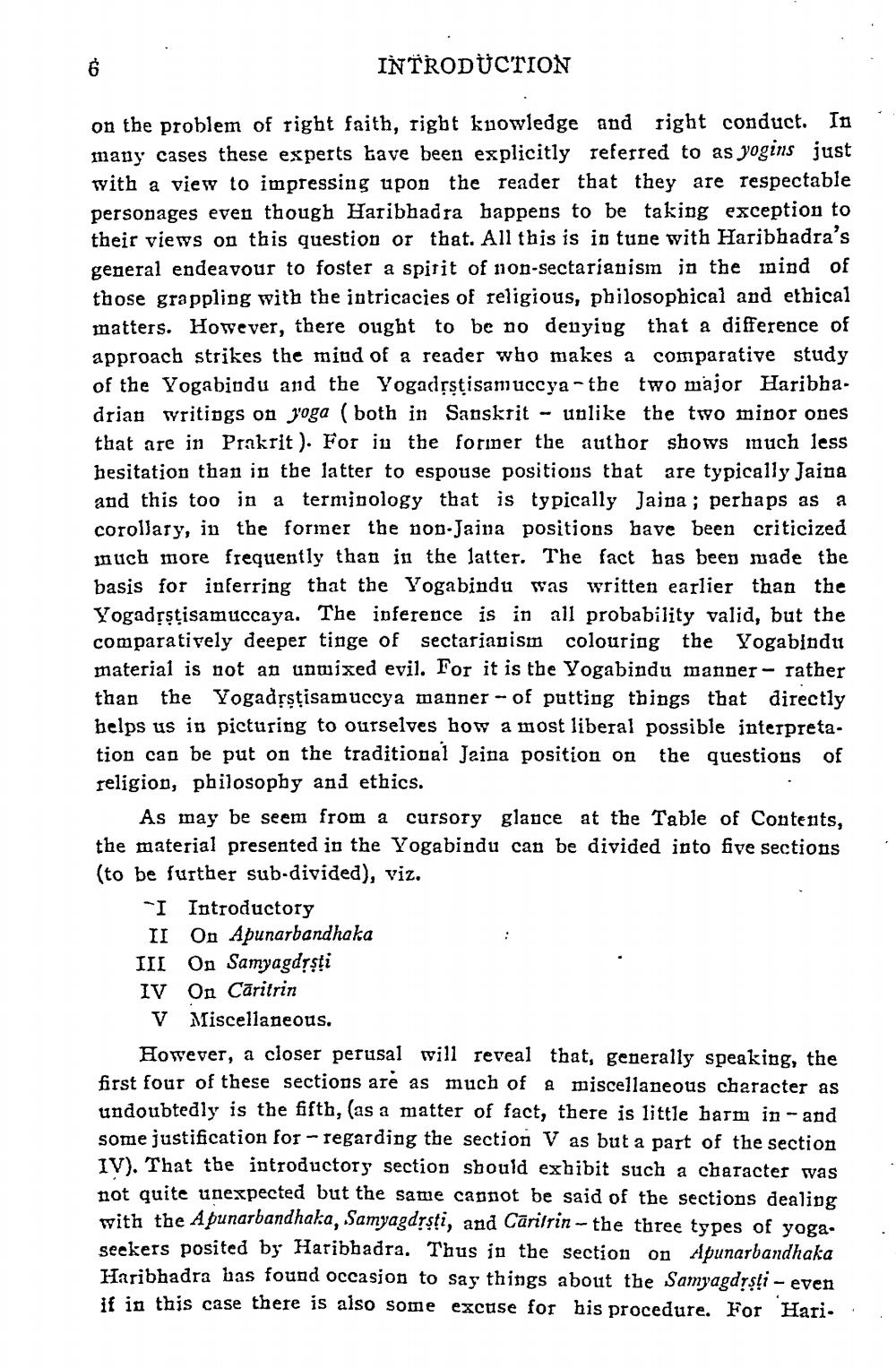________________
INTRODUCTION
on the problem of right faith, right knowledge and right conduct. In many cases these experts have been explicitly referred to as yogins just with a view to impressing upon the reader that they are respectable personages even though Haribhadra happens to be taking exception to their views on this question or that. All this is in tune with Haribhadra's general endeavour to foster a spirit of non-sectarianism in the inind of those grappling with the intricacies of religious, philosophical and ethical matters. However, there ought to be no denying that a difference of approach strikes the mind of a reader who makes a comparative study of the Yoga biodu and the Yogadşstisamuccya- the two major Haribha. drian writings on yoga (both in Sanskrit - unlike the two minor ones that are in Prakrit). For in the forner the author shows much less hesitation than in the latter to espouse positions that are typically Jaita and this too in a terminology that is typically Jaina ; perhaps as a corollary, in the former the non.Jaina positions have been criticized much more frequently that in the latter. The fact has been made the basis for inferring that the Yogabindu was written earlier than the Yogadrstisamuccaya. The inference is in all probability valid, but the comparatively deeper tinge of sectarianism colouring the Yogabindu material is not an unmixed evil. For it is the Yogabindu manner - rather than the Yogadrstisamuccya manner - of putting things that directly belps us in picturing to ourselves how a most liberal possible interpretation can be put on the traditional Jaina position on the questions of religion, philosophy and ethics.
As may be seem from a cursory glance at the Table of Contents, the material presented in the Yogabindu can be divided into five sections (to be further sub-divided), viz.
-I Introductory
II On Apunarbandhaka III On Samyagdýsti IV On Caritrin
V Miscellaneous.
However, a closer perusal will reveal that, generally speaking, the first four of these sections are as much of a miscellaneous character as undoubtedly is the fifth, (as a matter of fact, there is little harm in - and some justification for -regarding the section V as but a part of the section IV). That the introductory section should exhibit such a character was not quite unexpected but the same cannot be said of the sections dealing with the Apunarbandhaka, Samyagdrsti, and Carilrin-the three types of yoga. seekers posited by Haribhadra. Thus in the section on punarbandhaka Haribhadra has found occasion to say things about the Samyagdisti - even if in this case there is also some excuse for his procedure. For Hari...




